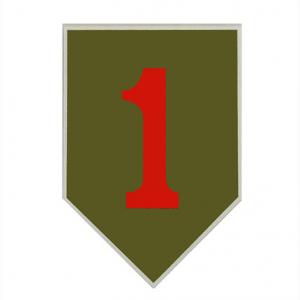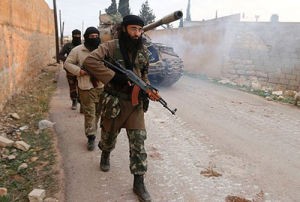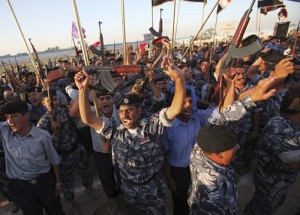 During World War Two, soldiers of the American 1st Infantry Division observed that the army consisted of them and millions of rear-echelon troops. Big Red One indeed led the way into North Africa and Normandy, but the comment was more lament or boast than fact.
During World War Two, soldiers of the American 1st Infantry Division observed that the army consisted of them and millions of rear-echelon troops. Big Red One indeed led the way into North Africa and Normandy, but the comment was more lament or boast than fact.
Special forces troops of Afghanistan and Iraq would nod their heads at the GI comment. They have undertaken the bulk of the fighting against the Taliban and ISIL, while fellow soldiers in non-elite units have provided limited support or, worse, shown their heels with the first shots.
Elite Afghan and Iraqi troops have so far taken the brunt of the fighting. They may be nearing exhaustion. Their enemies may see opportunity.
Regular troops
The Afghan and Iraqi armies, despite billions of dollars in equipment and years of training, have not become effective fighting forces, leaving the bulk of the fighting to others.
Regular forces are plagued by a slew of problems. Soldiers come from different regions, tribes, and peoples which makes small-unit cohesion – the most critical dimension of effective armies – either weak or altogether absent.
Officers obtain their positions through connections and bribery. Many recoup their expenditures by pocketing the pay of soldiers, entering ghost personnel on the books, and selling equipment on black markets where some purchasers may be on the other side.
Special forces
While elite Afghan and Iraqi have not reached the levels of professionalism and effectiveness of, say, counterparts in the US, Britain, France, and Russia, they are manifestly superior to counterparts in their countries’ regular army.
Officers are more professional and better trusted. Enlisted personnel are more homogeneous and better motivated. All ranks are better paid, more confident, and more spirited.
Iraq’s successes at Tikrit and Ramadi were spearheaded by special forces units, with regular troops and militias in less exposed supportive roles. The same can be said of Afghan successes in Kunduz city, where the Taliban scattered regular troops, and special forces had to be flown in to retake the provincial capital.
Though casualty figures are unreliable in both countries, elite units almost certainly took high casualties – killed and wounded. Regaining unit effectiveness requires more than a few weeks in the rear and sending in fresh troops. It takes time, several months or more, to recover from the shock of high losses and to integrate new guys into the unit. And of course resentment toward listless regular units will do nothing good for overall effectiveness.
Enemy responses
 The Taliban and ISIL are effective organizations. Intelligence on the shortcomings of opposing forces is not lacking. They know which enemy forces fight and which ones don’t. They know which ones have already taken high casualties and which ones never will.
The Taliban and ISIL are effective organizations. Intelligence on the shortcomings of opposing forces is not lacking. They know which enemy forces fight and which ones don’t. They know which ones have already taken high casualties and which ones never will.
Since its lightning campaigns of 2014, ISIL has sustained a string of losses. It faces an impending major battle for Mosul, where it will confront a force led by Iraqi special forces driving from the south. ISIL may seek to inflict devastating casualties that will put Iraqi special forces out of action for many months or more. Breaking Iraq’s limited number of good troops will restore ISIL’s fortunes.
Once the fighting season returns in a few months, the Taliban are better positioned to take advantage of overtaxed Afghan special forces. Able to choose the time and place of battles, and more numerous than ISIL in Iraq, the Taliban can launch coordinated offensives in the south, east, and north that will overstretch, and possible break, Afghanistan’s limited number of effective troops. This in turn will open up whole districts to rapid conquest.
In both theaters, the US will deliver relentless tactical airstrikes to keep indigenous special forces units from taking debilitating casualties. American special forces may be called upon to do the same for brief periods.
Syria
 Little is known of the Syrian army’s condition. Outside news organizations cannot visit battlefronts as they can in Iraq and Afghanistan. Glimpses of Syrian troops show predictable footage of celebrations by troops in remarkably tidy uniforms and with fresh faces unlikely to have faced death.
Little is known of the Syrian army’s condition. Outside news organizations cannot visit battlefronts as they can in Iraq and Afghanistan. Glimpses of Syrian troops show predictable footage of celebrations by troops in remarkably tidy uniforms and with fresh faces unlikely to have faced death.
Syria’s better units may also be vulnerable to exhaustion. Westerns and rebel intelligence outfits will be identifying these units and seeking to put them out of combat. This will weaken Damascus in negotiations and push Moscow and Tehran into sending more troops into the war.
Copyright 2016 Brian M Downing